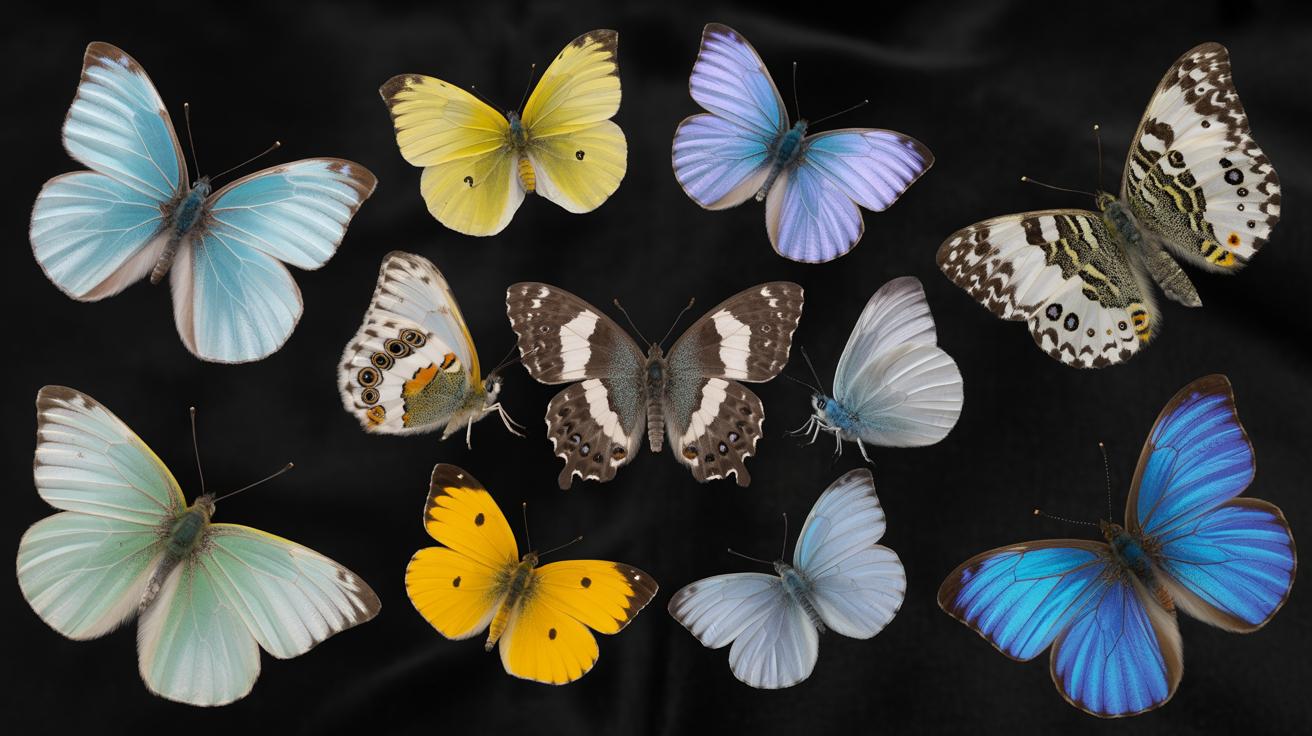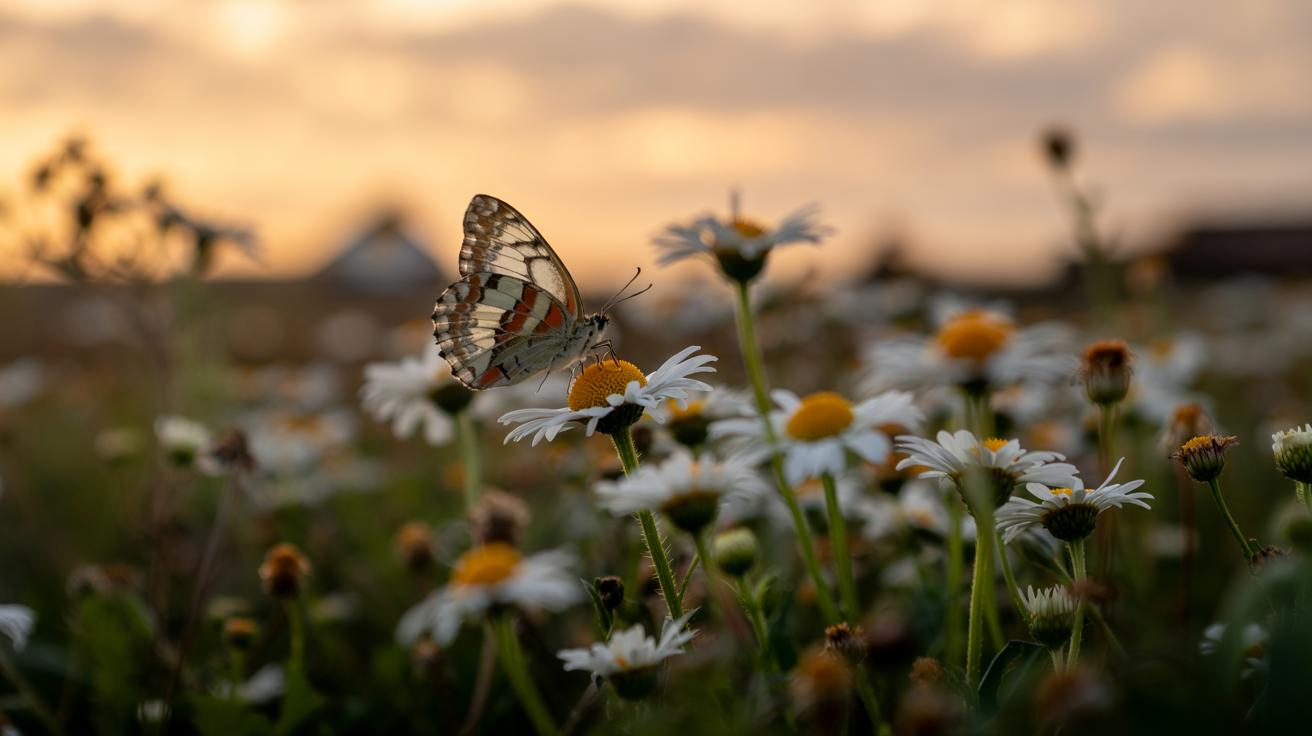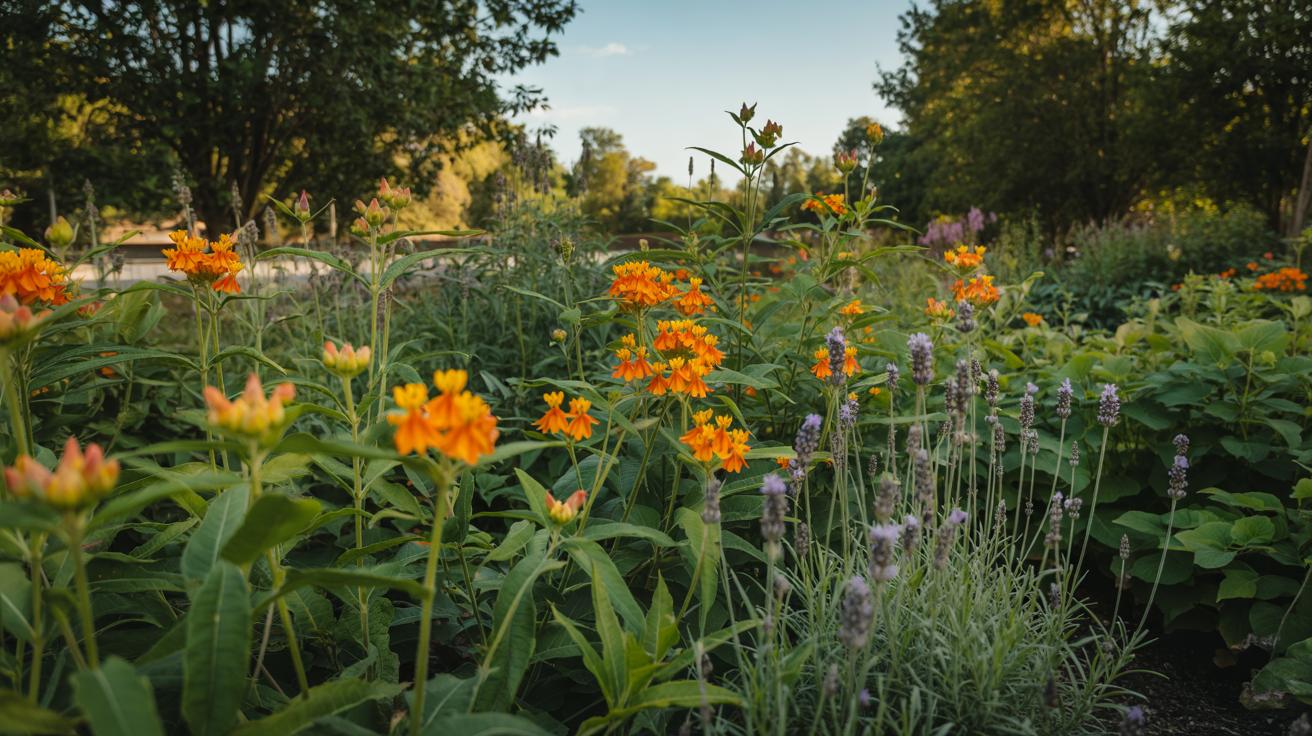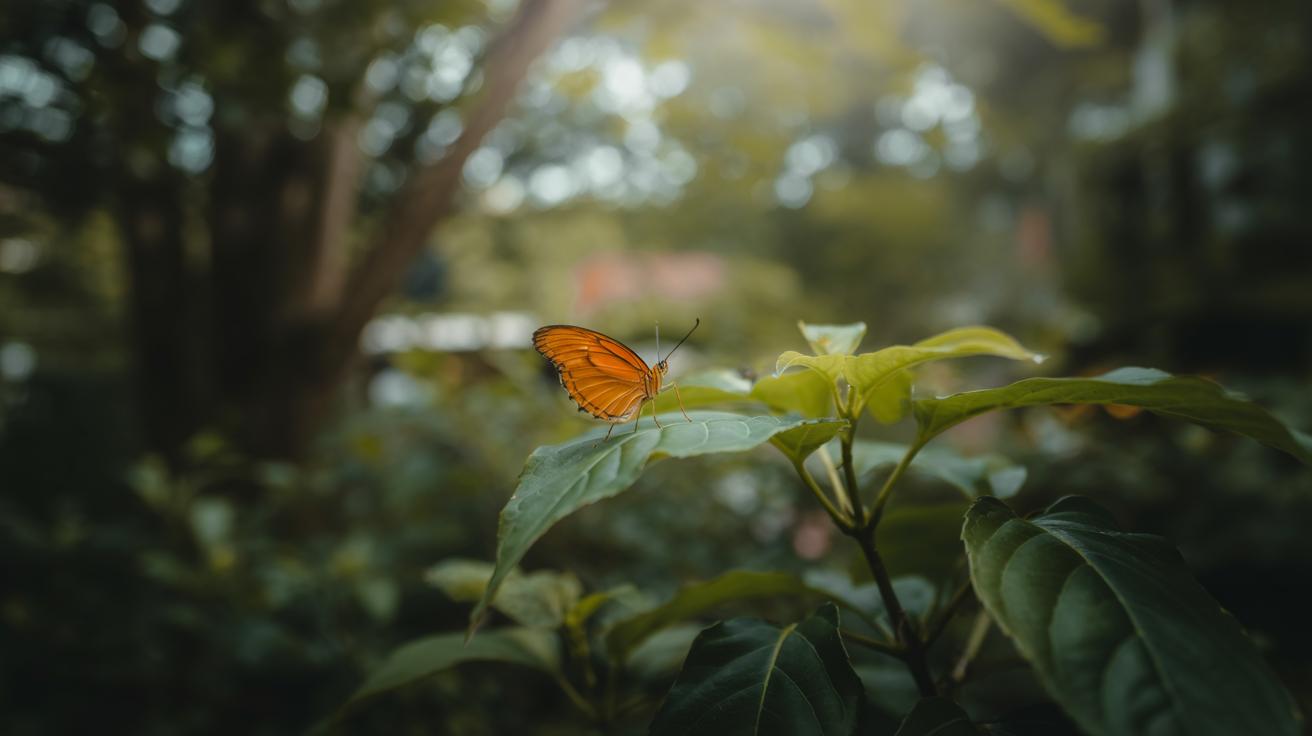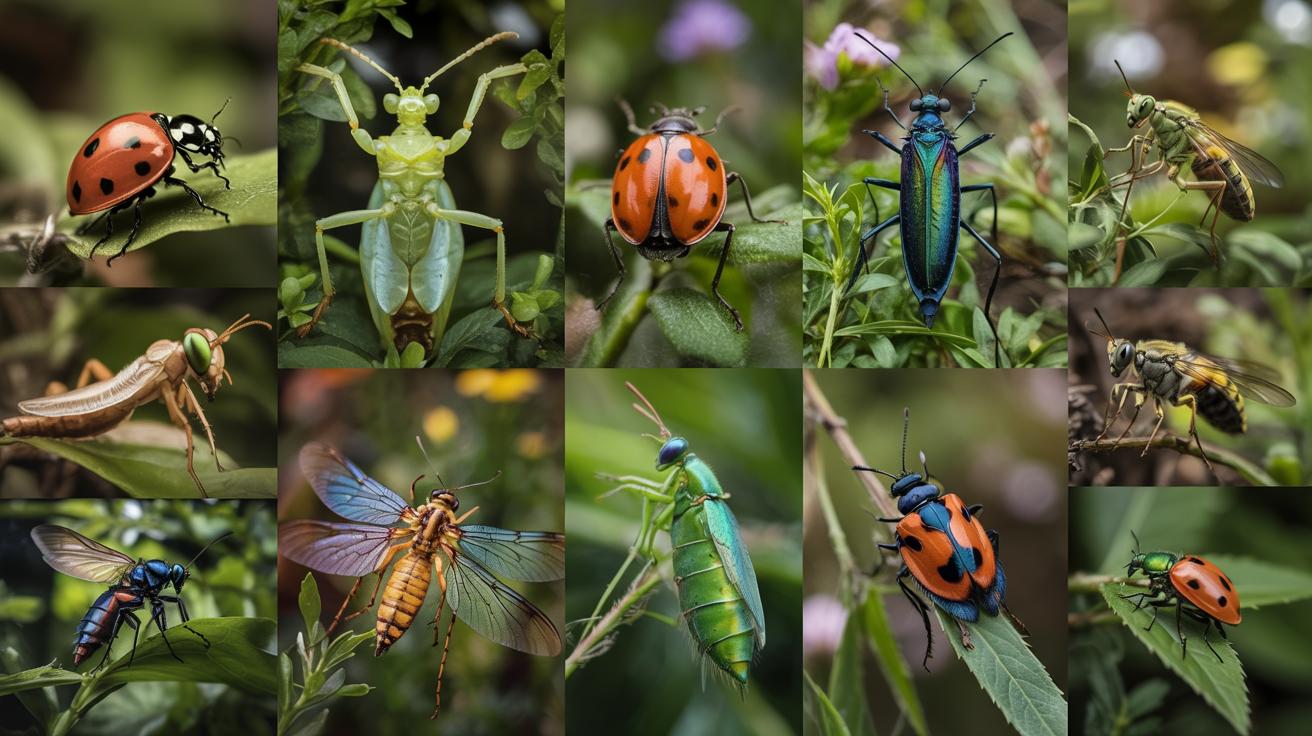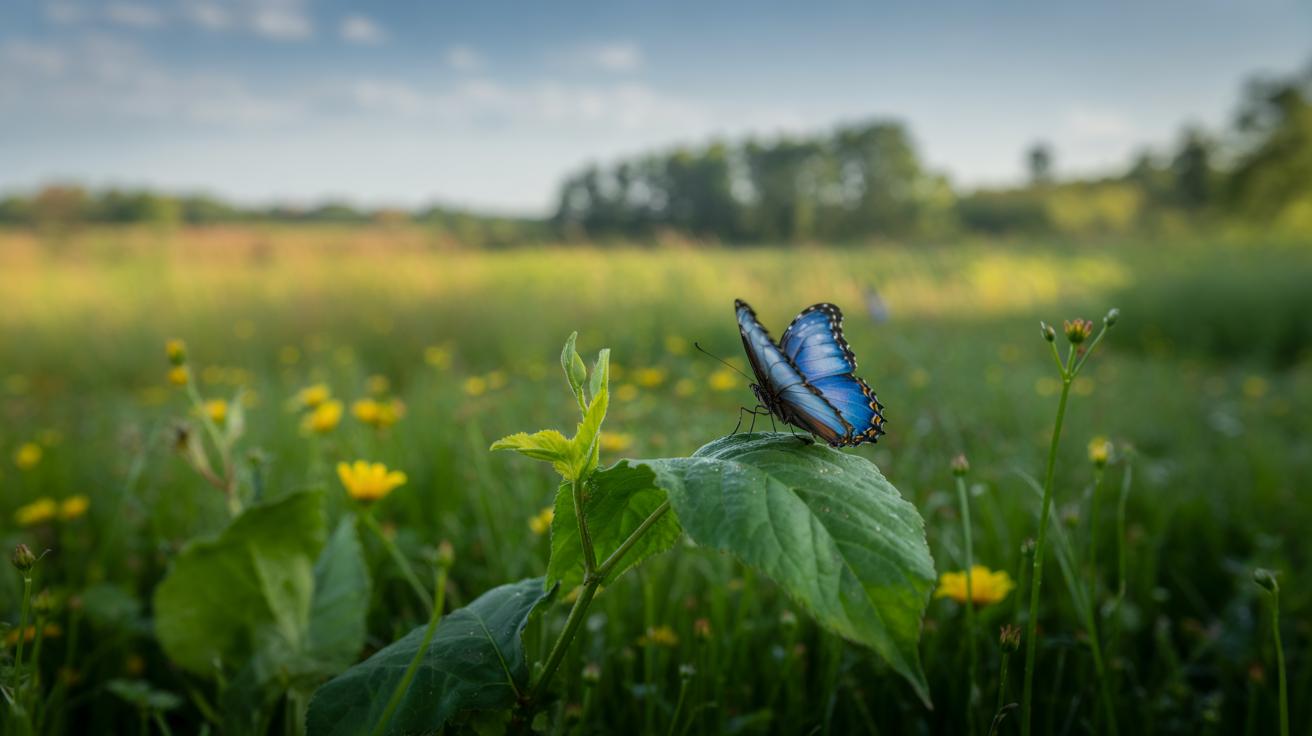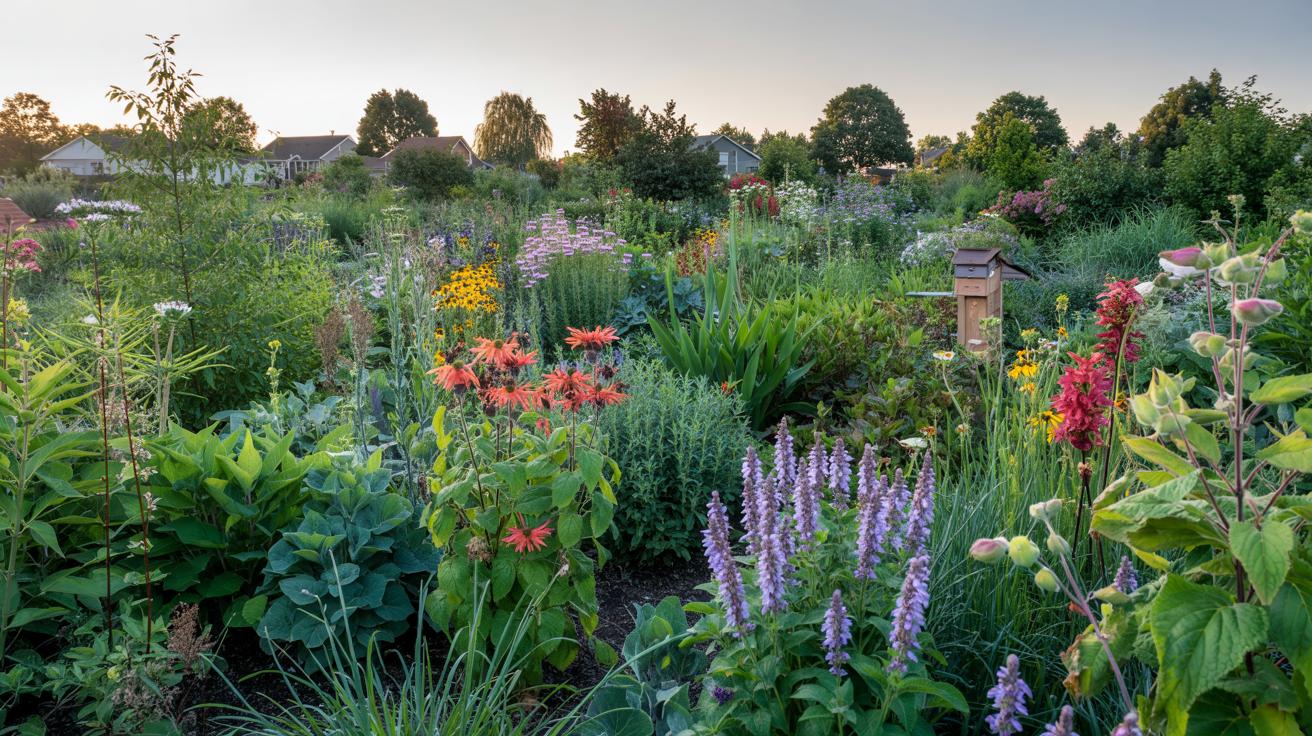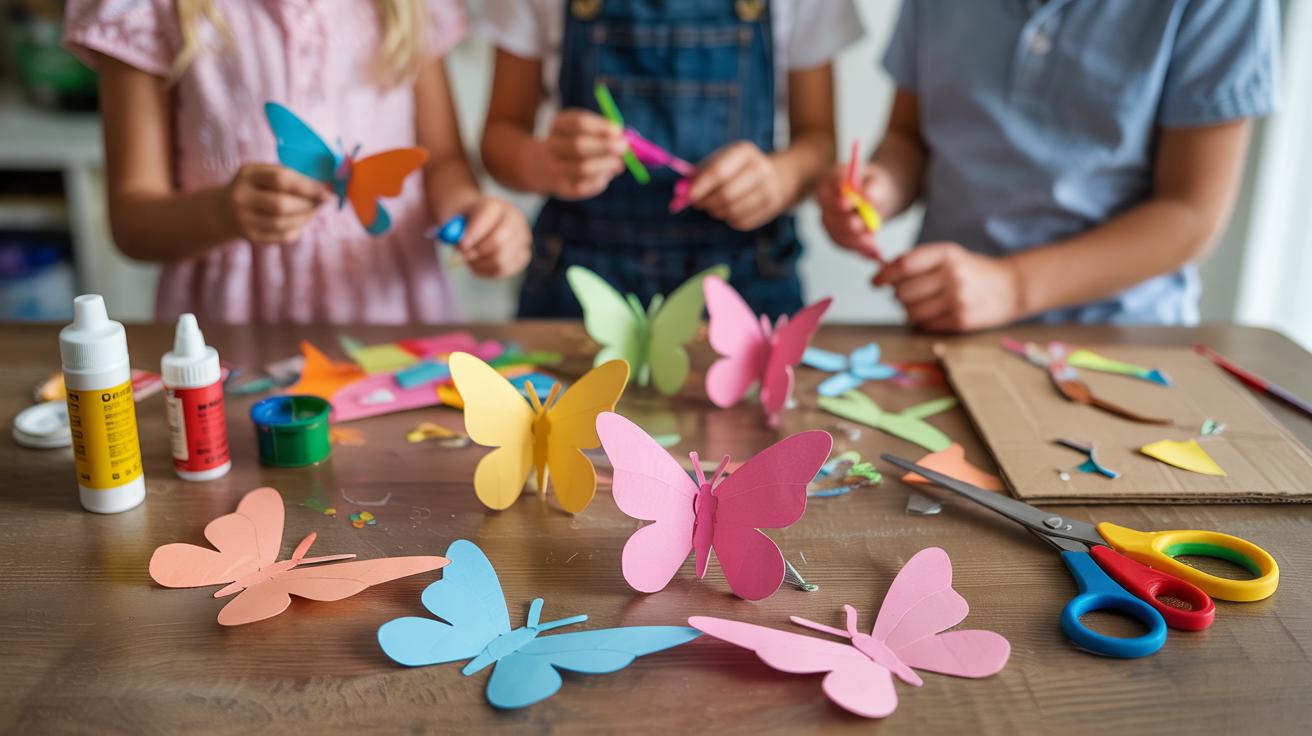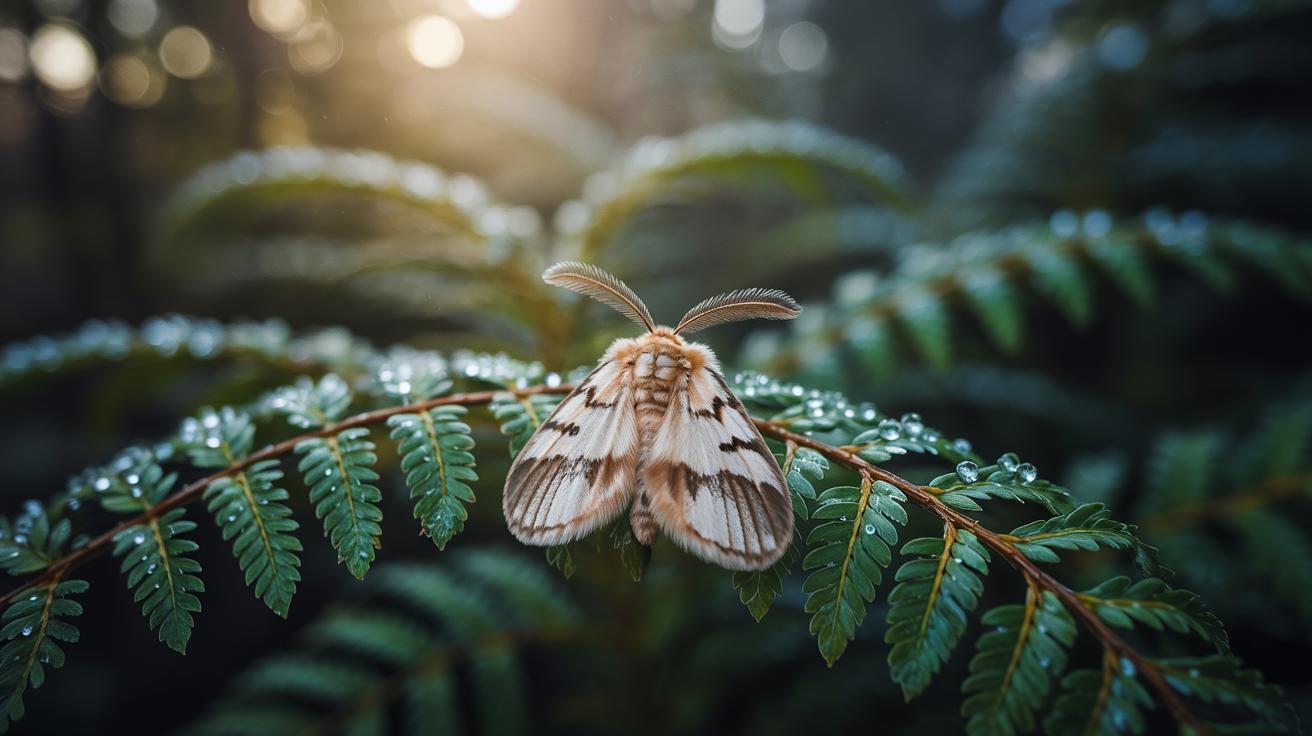Introduction
Butterflies captivate us with their delicate wings and vibrant patterns. These insects offer more than beauty; they play a vital role in ecosystems. You may wonder which butterfly is considered the most beautiful and why. This article will introduce you to some of the most visually striking species and explain what makes them stand out. Understanding these creatures can give you a new appreciation for nature’s designs.
Many butterflies show bright colors and distinct wing shapes that attract attention. Some have unique habits or live in specific environments that add to their intrigue. As you read, you will find a detailed ranking of butterfly species based on their appearance and other interesting traits. Prepare to explore the world of butterflies and discover which species reign supreme in the beauty contest of the insect world.
What Defines a Butterfly as Beautiful
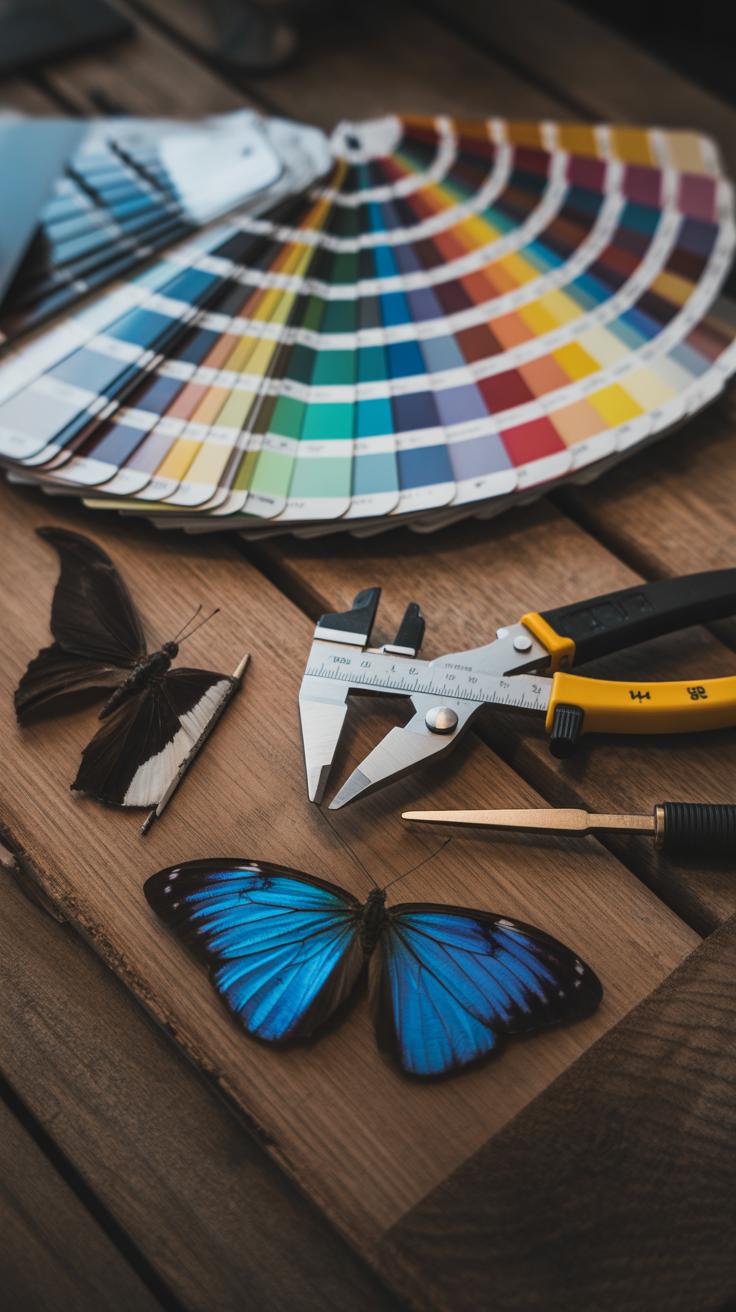
Beauty in butterflies comes from a combination of features that catch your eye and offer more than just visual appeal.
Wing colors grab your attention first. Bright hues often signal something important, like warning predators or attracting mates. Patterns add complexity and make each species unique. Spots, stripes, and shapes break up their outline, helping some blend into their surroundings.
Wing shape changes how a butterfly looks and flies. Some wings are rounded, appearing soft and gentle, while others have sharp edges that make them look striking or fast.
Size plays a role too. Larger butterflies stand out more, but smaller ones use subtle beauty to thrive in tight spaces. These traits don’t just serve human ideas of beauty—they also help butterflies survive in the wild.
What do you notice first when you see a butterfly? Color, shape, or size? Thinking about these features lets you appreciate both the art and science behind their beauty.
Wing Colors and Patterns
Colors on butterfly wings don’t appear randomly. They serve clear purposes like blending into leaves or warning predators with bright, contrasting shades. Deep blues, fiery reds, sunny yellows, and soft whites have different meanings depending on where the butterfly lives.
Patterns help butterflies communicate and protect themselves. Eyespots on wings may scare off birds, while camouflage patterns hide them from danger. Some use mimicry, copying poisonous species to avoid attacks.
Take the Monarch butterfly’s orange and black pattern. It warns birds that it tastes bad. In contrast, the dead leaf butterfly’s dull browns help it vanish against bark and fallen leaves.
How do you think these colors and patterns affect your judgment of a butterfly’s beauty? Do you prefer bold or subtle designs?
Wing Shape and Size
Shape guides your eye along the butterfly’s body. Pointed wings often imply speed and agility, while rounded wings emphasize delicacy. Some species have tails or extensions that add flair and confuse predators.
Size affects not just appearance but flight style. Larger wings can carry butterflies farther, while smaller wings allow quick, darting moves. Variation in size and shape among species creates a rich diversity that keeps butterflies fascinating.
The Paper Kite’s large, rounded wings make it elegant and slow-moving, perfect for hovering near flowers. The Swallowtail’s tail-like extensions add an elegant look and distract predators.
Do you think bigger wings make a butterfly more beautiful, or do unique shapes catch your eye more? How might these traits influence how you rank butterfly beauty?
The Orange Tip Butterfly as a Case Study
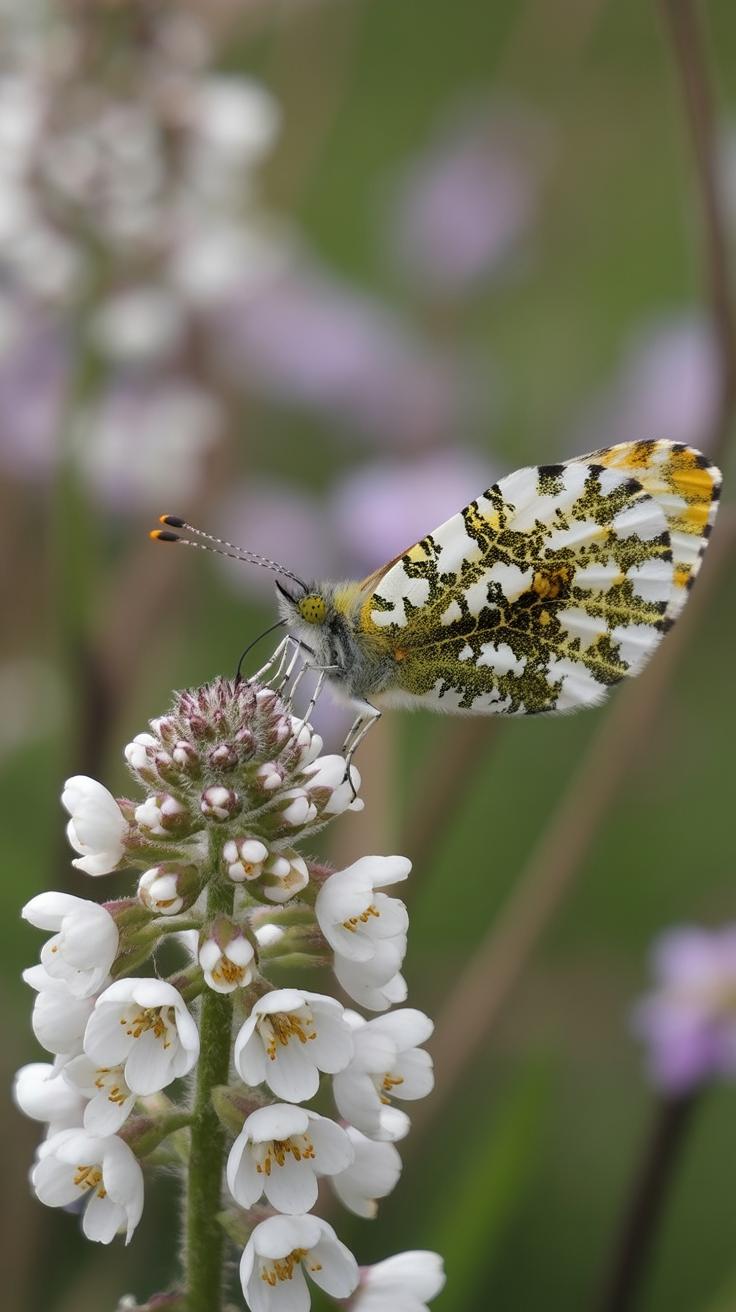
The Orange Tip butterfly stands out among many species for its unique blend of colors and behaviors. You will often spot this butterfly in meadows, gardens, and woodland edges across Europe and parts of Asia. Its appearance catches attention immediately, especially when the bright orange tips of the males flutter in sunlight. These colors are not just for show; they play a role in attracting mates and warding off predators.
The Orange Tip’s behavior includes swift, low flight and frequent visits to flowering plants for nectar. Observing this butterfly can teach you how color and movement work together in nature. What makes it especially interesting is the subtle difference between males and females, showing nature’s balance between visibility and camouflage. This species offers a clear example of how beauty and survival are connected.
Appearance of the Orange Tip
The male Orange Tip butterfly features bright orange tips on its forewings. These areas stand out sharply against the white background, making the butterfly easy to recognize. The underside of the wings shows mottled green and white patterns, helping the butterfly blend into flowers and leaves.
Females lack the orange tips, showing instead a mix of white, black, and green patterns. These colors help them hide from predators when resting on plants. The contrast between the male’s bold orange and the female’s muted tones highlights nature’s use of color for different purposes. When you look closely, the wing shape is elegant and smooth, supporting both flight and display.
Habitat and Lifestyle
Orange Tip butterflies live mainly in open areas like meadows and gardens. They prefer places where there are plenty of wildflowers, which serve as food sources. You will see them feeding on nectar from plants like cuckoo flowers and garlic mustard. These host plants also serve as breeding grounds, where females lay eggs.
The orange tip’s environment supports its beauty because flowers provide colors that complement the butterfly’s wings, enhancing its visual appeal. Their mating behavior includes males patrolling territories to find females, using their orange wing tips to advertise strength and health. You might ask, how does the environment influence the evolution of such distinct features? Here, the mix of habitat, food, and mating needs creates conditions that shape the butterfly’s appearance and habits.
Ranking Criteria for the Most Beautiful Butterflies
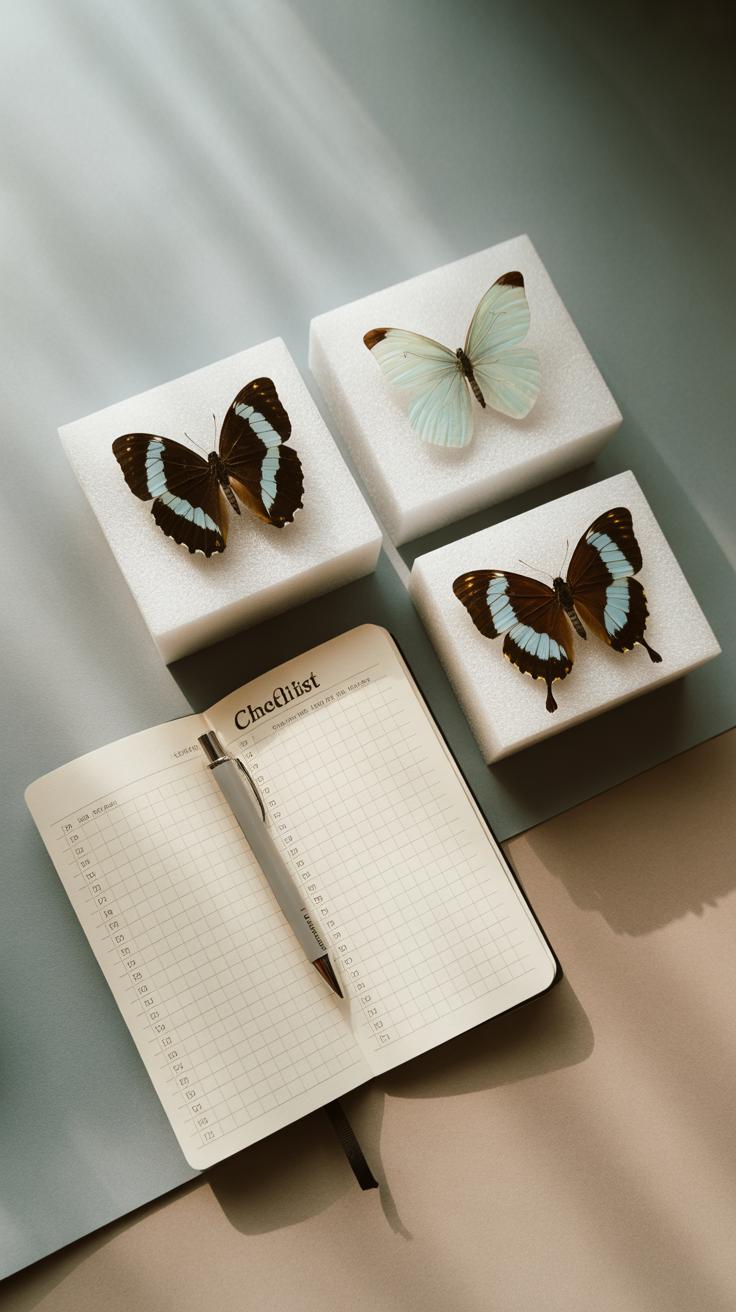
Beauty in butterflies goes beyond just looks. When ranking the most beautiful species, you need clear points to guide your choices. Four main criteria shape this ranking.
First, visual features matter a lot. The color, pattern, and style of wings catch your eye immediately. Next, rarity plays a key role. Butterflies that appear less often gain special attention because unique sightings invite fascination.
Uniqueness also weighs in. Some species have shapes or behaviors that make them one-of-a-kind. These traits boost their ranking, showing that beauty isn’t just about looking good, but standing out.
Ecological importance adds a different layer. Butterflies that help keep nature balanced or support other species inspire respect. Your ranking might change if you consider how butterflies affect ecosystems.
Which aspect matters most to you when judging butterfly beauty? Just color, or the whole story behind each species?
Visual Features
Your eyes first catch color vibrancy. Bright, rich colors grab attention quickly. Deep blues on the Blue Morpho or fiery oranges on the Monarch showcase this well. Colors that shift with light add extra charm.
Patterns also play a strong role. Complex and detailed designs create a sense of intricate beauty. Take the Swallowtail’s tail extensions or the Owl butterfly’s eye spots—they give the wings a unique style.
Overall aesthetics combine balance, wing shape, and size. Symmetry makes the pattern pleasing, and bigger wings can appear more impressive. Look for how all these visual parts work together to form a stunning image.
Rarity and Uniqueness
Rarity makes a butterfly more valuable in beauty contests. When you see something rare, it feels special. The Rajah Brooke’s Birdwing or the Queen Alexandra’s Birdwing exist only in limited locations, making them prized finds.
Unique characteristics boost a butterfly’s status. Some species glow under ultraviolet light, while others mimic leaves or birds. These traits show nature’s creativity, increasing your sense of wonder.
Uncommon butterflies may also have unusual habits or look different by season or gender. These details enhance their story and beauty, inviting you to appreciate more than just their appearance.
Do you find rarity or unique traits more exciting when looking at butterfly beauty? What could make a butterfly unforgettable for you?
Top Butterflies in the World
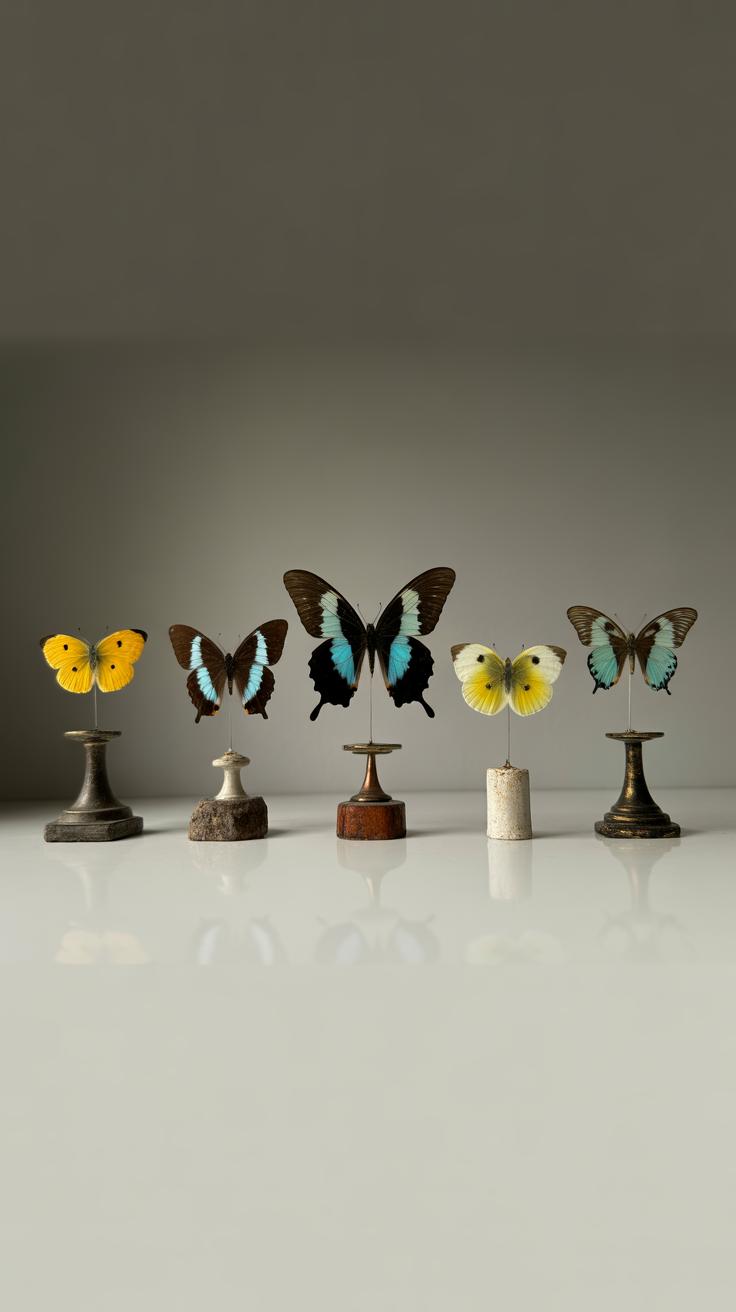
You may wonder which butterflies stand out for their beauty across the globe. Some species catch your eye through brilliant colors, unusual shapes, or rare patterns. The Blue Morpho, for example, displays metallic blue wings that shine in sunlight. It lives in Central and South American rainforests, where its bright wings contrast with shady trees. This butterfly uses its color to startle predators by flashing an intense blue before it folds its dull brown underside wings to blend in.
Luna Moths attract attention in North America with their pale green wings and long tails. Their translucent wings shimmer at night, an uncommon feature among large moths. Luna Moths do not eat as adults, so their beauty focuses on attracting mates quickly.
Swallowtails feature wing tails that resemble a swallow’s forked tail. These butterflies show off bold patterns and colors, often warning predators of toxicity. Found worldwide, they appear in diverse environments from gardens to mountains. Their graceful flight combined with distinct wing shapes sets them apart.
Famous Beautiful Species
Blue Morphos are famous for the vivid blue of their wings, caused by light reflecting off tiny scales. Their size and brightness make them easy to spot in the rainforest. Have you ever noticed how they vanish when they close their wings? That contrast is their survival trick.
Luna Moths stand out because of their unusual appearance and night activity. Their large size and glowing green color are rare, making them a favorite among moth enthusiasts. You might ask how they manage to survive without eating.
Swallowtails impress with their elegance and variety. From the black-and-blue Pipevine Swallowtail to the bright yellow Eastern Tiger Swallowtail, these butterflies adapt to many habitats. Their tail shapes help confuse predators, showing how form serves function.
Lesser-Known Beauties
The Madagascan Moon Moth has large, pale green wings with long tails, similar to the Luna Moth. It lives only in Madagascar’s isolated forests, making its sightings rare. This butterfly’s beauty lies in its delicate wing shapes and subtle patterns.
The Sunset Moth from Africa captures attention with glowing iridescent colors ranging from orange to green and blue. Unlike most moths, it flies during the day. Its bright patterns warn predators while dazzling observers.
Looking at the Glasswing Butterfly, you will find transparent wings edged with brown and orange. Native to Central and South America, its see-through wings make it almost invisible in flight. This rare feature combines camouflage and elegance.
The Role of Habitat in Butterfly Beauty
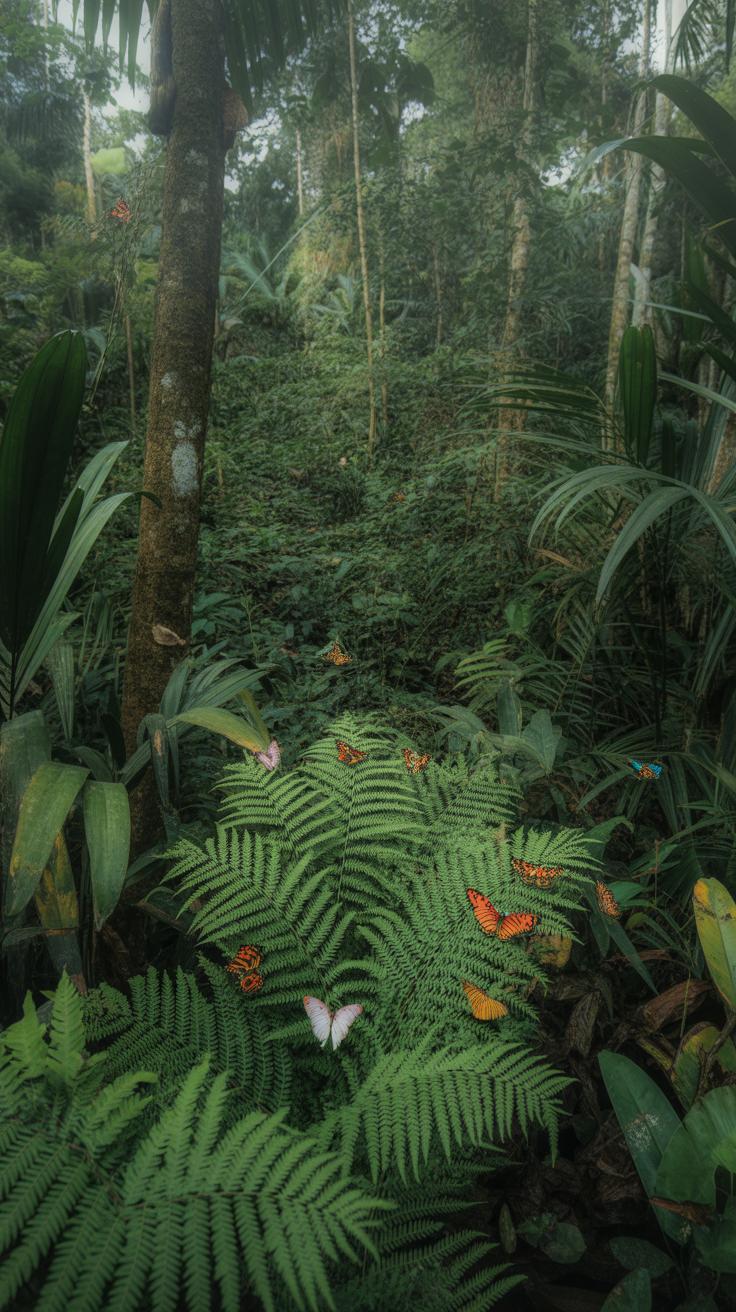
Your surroundings shape the way butterflies look more than you might think. Habitats impact colors, patterns, and even wing shape. Butterflies living in dense forests often show darker tones to blend into shadows. Bright colors might be less common there since attracting mates requires subtlety amid low light. In contrast, open areas allow vivid patterns to shine under sunlight, making bold designs effective for communication and defense.
Living conditions force butterflies to adapt. Predators, food supply, and climate create pressure that changes how butterflies evolve over generations. Those living near water might develop iridescent wings, while desert species focus on camouflage. How does your local environment influence the butterflies you see? Observing this link deepens your appreciation of their beauty beyond simple colors or patterns.
Forest and Meadow Butterflies
Butterflies in forests often have muted colors like browns and greens. These shades help them hide among leaves and bark. Their wings may be smaller, aiding quick movements through thick trees. Some display eye spots to scare off predators lurking in shadows. A forest-dwelling butterfly like the Purple Emperor reflects a balance of subtlety and flashes of iridescence, revealing its hidden elegance.
Meadow butterflies tend to be brighter and larger. Open skies and flowers invite vibrant blues, oranges, and yellows. Their wings spread wide for easy gliding in open air, showing off their bold designs. The Monarch butterfly, famous for its bright orange and black pattern, thrives this way. The differences between these habitats show how function shapes beauty, teaching you to look beyond just pretty colors when observing butterflies.
Climate Impact
Changes in temperature and rainfall affect when and how butterflies appear. Warmer weather can speed up life cycles, causing some species to emerge earlier. This can alter the timing of mating and feeding, influencing which features become important for survival and attraction. In colder places, butterflies often have thicker scales or darker wings that absorb heat to stay active.
Unpredictable weather also challenges butterflies’ ability to survive. Dry seasons may limit available flowers, forcing butterflies to evolve lighter colors that reflect heat or patterns that confuse predators. How might climate shifts change the butterflies you see in your area? Observing these effects connects you to the broader story of nature’s adaptation and the delicate balance that shapes butterfly beauty worldwide.
How to Observe and Appreciate Butterflies
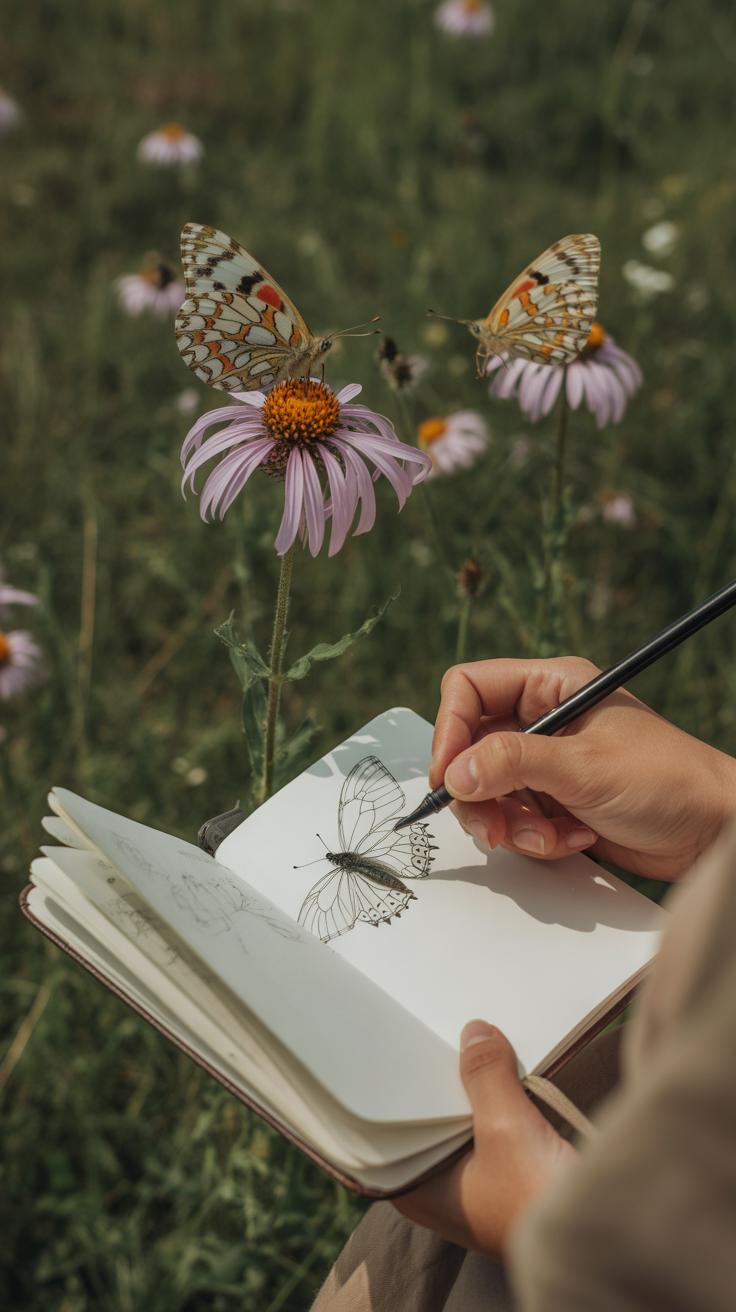
Watching butterflies requires patience and attention. To catch their delicate flight and vibrant colors, move slowly and avoid sudden gestures. Look for flowers, leaves, or sunlit patches where butterflies often rest or feed. Bring a notebook to jot down the species you see or any behaviors that surprise you.
Photographing butterflies challenges you to focus quickly. Use a camera with a zoom or a phone with a good lens. Wait for a butterfly to pause, and frame your shot carefully. Bright, natural light helps capture their true colors. Try different angles to show the patterns on wings or the feeding process.
Learning about butterflies enriches your experience. Carry a simple guidebook or use identification apps to recognize species. Why do some butterflies wander far while others stay close? What flowers do they prefer? Asking questions will deepen your connection and keep your curiosity alive.
Best Times and Places for Observation
Butterflies are most active on warm, sunny days with light winds. Morning and late afternoon often offer the best chances for sighting them when temperatures rise but it is not too hot. Some species prefer early sunshine, while others are visible through midday.
Find butterflies in gardens, meadows, forest edges, and near water sources. Places with native plants attract local species. For example, monarch butterflies gather around milkweed plants. In tropical regions, rainforests shelter a wide range of vibrant species, while in temperate zones, open fields provide diverse sightings.
Season matters too. Spring and summer bring the highest variety, as these are breeding and feeding times. Some species migrate, so observing their timing reveals interesting patterns. What places near you might hold hidden butterfly hotspots? Checking local nature reserves or parks is a good start.
Respectful Watching Practices
Respecting butterflies means putting their welfare first. Avoid touching their wings; even gentle touches can harm the tiny scales that give them color and protect them. Stand back and let them go about their activities uninterrupted.
Stay on paths to protect the plants and habitats butterflies depend on. Avoid stepping on host plants or nectar sources. If you use photography equipment, keep it low impact. Flash or loud noises can startle butterflies and cause them to fly away before you get a good look.
Consider the bigger picture. How would your presence change a fragile ecosystem? If you notice someone disturbing butterflies or picking flowers, gently explain how that harms these insects. Watching butterflies offers a chance to learn respect for nature’s small wonders and support their survival.
Creating a Butterfly Friendly Environment
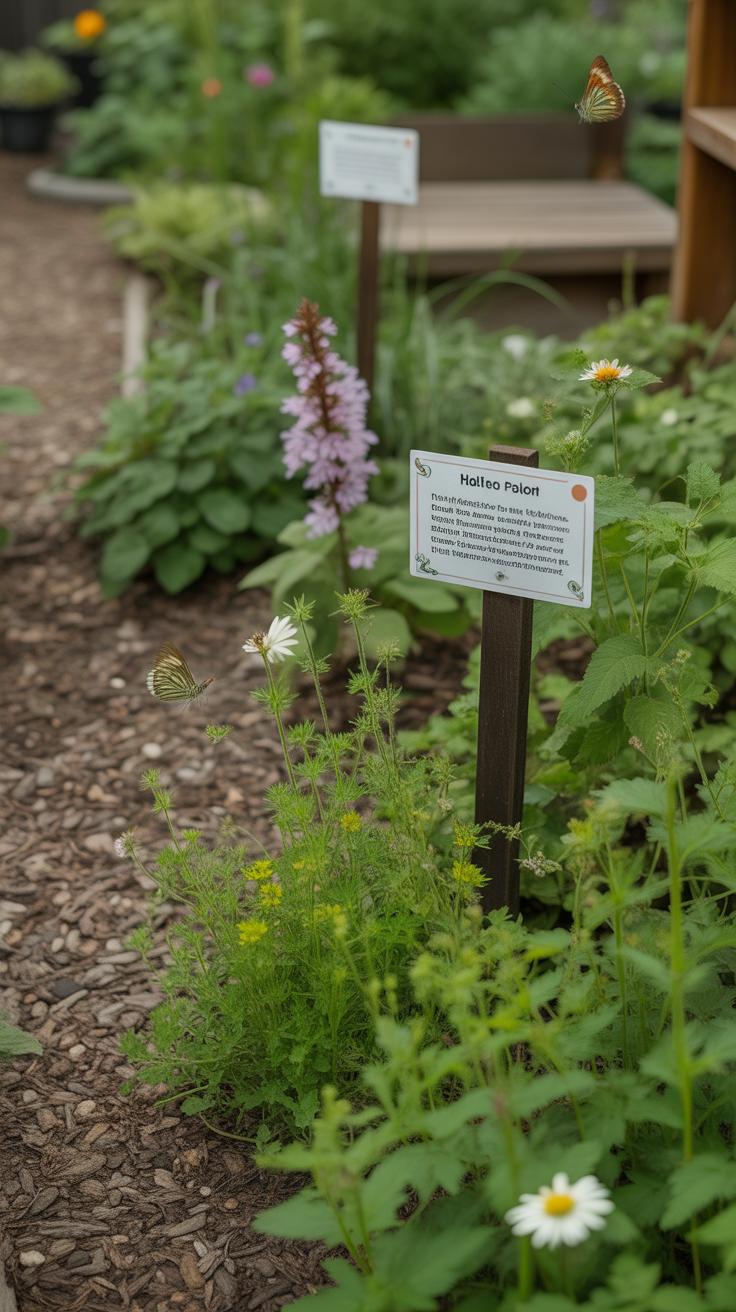
Supporting butterfly populations starts with the spaces around you. Small actions in your yard or community can make a big difference.
Focus on providing places where butterflies can feed, breed, and rest. Include sunny spots with shelter from wind and areas of bare soil for puddling, where butterflies gather moisture and nutrients. Avoid using pesticides, which harm butterflies at all stages.
Think about how you can shape your garden or local park to welcome these insects. What changes could you make today that would support butterfly life cycles? Even a few native plants can create important habitats and help connect green spaces.
Selecting Plants and Habitat Features
Choose native plants to meet the needs of your local butterflies. Many caterpillars rely on specific host plants to thrive, so planting those is key.
For example, milkweed supports monarch caterpillars, while violets serve as hosts for the fritillary butterflies. Provide a variety of nectar-rich flowers like coneflowers, goldenrod, and asters to feed adult butterflies throughout the seasons.
Include plants with varied bloom times to keep nectar available from spring through fall. Leave some leaf litter and stems standing in fall and winter; some species lay eggs in these areas. Could your garden support the full butterfly lifecycle?
Community Conservation Efforts
Working together magnifies the impact of butterfly conservation. Schools, city parks, and neighborhood groups can create butterfly gardens or protect natural habitats.
Organizing planting events or educational workshops helps raise awareness and involves more people. Public spaces that include butterfly-friendly meadows boost biodiversity and offer learning opportunities.
Ask your community if it supports reduced mowing schedules and planting native species to benefit butterflies and other pollinators. How can your group inspire action and bring green spaces closer to people and nature?
The Future of Butterfly Beauty

Butterfly populations and their appearances face rapid change due to environmental pressures and human actions. How will these delicate creatures adapt as their habitats alter? Changes in temperature and weather patterns may shift the timing of butterfly life cycles, influencing when and where they emerge. This can affect their colors and patterns, which are vital for survival and attracting mates.
Your role in supporting butterfly survival becomes more critical as some species may develop new traits or lose others because of stress. Scientists track these shifts to understand how species like the Blue Morpho or Monarch might change in the future. The combination of climate change, pollution, and habitat fragmentation creates uncertain conditions.
Will future butterflies maintain their current variety and beauty? It depends on how well humans respond to these challenges. The next sections examine the threats butterflies face and the efforts underway to protect these stunning insects.
Threats to Butterfly Species
Butterflies face many threats that impact their survival and appearance. Habitat loss caused by urban growth and farming removes the plants butterflies need. Without these areas, their populations shrink. Climate change alters temperature and rainfall patterns, leading butterflies to emerge at the wrong time or in unsuitable places.
Pesticides and pollution also harm butterflies’ health and reduce their numbers. These chemicals can fade or damage their wing colors, which help in camouflage and attracting mates. Some species cannot adapt fast enough and risk extinction.
What happens when a butterfly species disappears? The beauty of nature dims, and local ecosystems lose a key pollinator. Protecting butterfly habitats and minimizing chemical use matters for keeping these insects alive and vibrant.
Hope Through Conservation
Conservation projects worldwide offer hope by saving butterfly habitats and promoting awareness. Programs like the Monarch Butterfly Biosphere Reserve in Mexico protect migration routes and breeding sites, preserving one of the most famous species.
Some communities plant native flowers and create butterfly corridors to connect isolated habitats. Such efforts allow butterflies to find food and mates easily, supporting healthy populations. Scientists also breed endangered species in captivity to boost numbers and reintroduce them to the wild.
Joining local butterfly conservation initiatives or supporting organizations helps sustain this work. Your choices can influence whether future generations see the same beautiful butterflies you admire today. How will you help keep their wings fluttering for years to come?
Conclusions
Butterflies display a wide range of beauty, influenced by their colors, patterns, and habitats. You have seen how different species bring their own unique charm to the natural world. Whether it is the orange-tipped wings or intricate camouflage, each butterfly has special features to admire. These insects also reflect broader environmental health and help support biodiversity.
Knowing about beautiful butterflies encourages you to observe nature more carefully and perhaps support butterfly-friendly practices. You can create butterfly gardens or choose plants that provide a habitat for caterpillars and adult butterflies. By protecting these species, you contribute to preserving their beauty for future generations. The world of butterflies offers endless fascination and value beyond their visual appeal.


